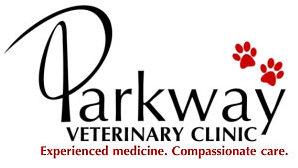Library
-
E-cigarettes are battery-operated devices used to create and inhale an aerosol composed of nicotine, flavorings, and other chemicals. If a companion animal ingests an e-liquid, signs of nicotine poisoning occur rapidly. The nicotine associated with e-cigarettes, even without tobacco, poses a serious health threat to dogs and cats.
-
Heart Disease in Cats
Las enfermedades cardíacas son condiciones muy graves tanto en perros como en gatos, y como en personas. Los gatos normalmente no desarrollan arterioesclerosis o enfermedades de las arterias coronarias, como ocurre comúnmente en los humanos.
-
Congestive Heart Failure in Dogs
La insuficiencia cardiaca es la incapacidad del corazón para mantener un aporte de sangre suficiente para satisfacer las necesidades del organismo. Una insuficiencia cardiaca suele reflejar un fallo del músculo cardiaco (insuficiencia miocárdica), que puede afectar al ventrículo izquierdo o al derecho.
-
Anal Sac Disease in Cats
Los sacos anales son dos pequeñas bolsas localizadas a ambos lados del ano, aproximadamente en posición de las agujas del reloj marcando las 4 y las 8. Las paredes de los sacos anales contienen numerosas glándulas sebáceas (sudor) que producen un fluido con un olor muy desagradable para los humanos.
-
Heartworm Disease in Cats
El gusano del corazón es un parásito de la sangre llamado Dirofilaria immitis que reside en el corazón o en los grandes vasos sanguíneos de los animales infectados.
-
Feline Leukemia Virus Disease Complex
El virus de la leucemia felina (FeLV) es una de las enfermedades infecciosas virales más importantes en gatos. Cuando se describió por primera vez se identificó como una forma de leucemia, y de ahí su nombre. El FeLV provoca diferentes enfermedades, no solo la leucemia.
-
Dental Disease in Cats
Las enfermedad dental es uno de los problemas médicos que los veterinarios en la práctica diaria ven con más frecuencia. Aproximadamente dos tercios de los gatos de más de tres años presentan algún grado de enfermedad dental. Los problemas más comunes son debidos a enfermedad periodontal, gingivitis o lesiones del cuello cervical, también conocidas como de resorción dental.
-
Many liquid potpourri products and essential oils are poisonous to cats, including oil of cinnamon, citrus, pennyroyal, peppermint, pine, sweet birch, tea tree (melaleuca), wintergreen, and ylang ylang. Both ingestion and skin exposure can be toxic.
-
Female cats have their first estrous (reproductive or heat) cycle when they reach puberty (sexual maturity). Each cycle consists of several stages; the stage called estrus refers to when the female can become pregnant. This handout explains the cycle stages and signs.
-
Open and honest communication with your veterinarian and veterinary healthcare team throughout your cat's life lays the foundation for effective communication when that cat's life begins drawing to a close. Discussion with your veterinarian will clarify any specific medical implications of your cat's disease that can serve as benchmarks to suggest that euthanasia should be considered. Most often, euthanasia is provided at the veterinary practice or in your home. The veterinary healthcare team will be an important partner as you negotiate the difficult days and decisions leading up to your cat's peaceful passing.


